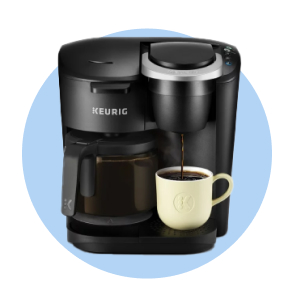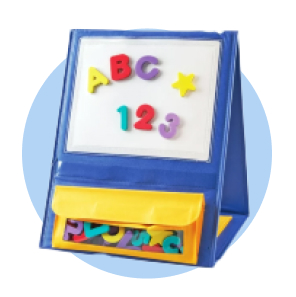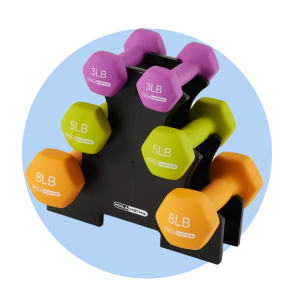
The Hospitality Professional's Year-End Checklist
Review finances, inventory & guest satisfaction
The hospitality industry has seen some significant ups and downs over the past year. Guests are willing to pay more for rooms and services, but they still aren’t traveling as much as they used to. More hotels are opening, but the cost of doing business is still on the rise. Under these competitive conditions, delighting guests is absolutely vital—but so is running a profitable business. To help out, we’ve come up with a year-end checklist for hospitality professionals. After you review these seven items, you should have a better understanding of your finances, your guests and your staff—and have some ideas for the new year.

A year-end checklist for hospitality professionals
1. Run a financial report
The single most important consideration for your hospitality business is whether it’s making money. Hospitality budgeting is both an art and a science. You need to analyze how much you spent in the past year and make reasonable predictions about the coming one. At the same time, you need to balance cutting costs with enticing new guests and paying your staff fairly. Specialized hospitality management software can help here, as can hiring an experienced consultant.
Check out Reducing Costs: Walmart Business Addresses the Business Landscape for ways to lower your operating expenses in the new year.
2. Check in on guest satisfaction
Your establishment makes an impression on every single guest who passes through your doors. If they were thrilled, you’re on the right track. If they were disappointed, you need to fix things. This is where guest satisfaction surveys can be a powerful tool. Depending on the questions, you’ll see which parts of the experience guests liked and disliked, as well as whether they’d be willing to come back.
If you haven’t distributed surveys, you can still get a general sense of guest satisfaction from online feedback on booking sites and social media. Just remember that more than half of customers don’t write reviews and those who do tend to highlight unusually good or bad experiences.
3. Review staff performance
Labor is one of the biggest expenses in the hospitality industry, so hiring—and keeping—the best employees should be a high priority. The exact qualities that your staff needs will depend on your business, but you can evaluate just about every staff member based on:
Customer service: Hospitality employees should always maintain a polite, professional and helpful attitude toward guests.
Respect from coworkers: Each worker is part of a team. They should get along with their peers and offer support when necessary.
Attendance: A staff member should show up on time for every scheduled shift and communicate potential conflicts in advance.
Expertise: Whether they’re a desk clerk, a chef or a member of the housekeeping staff, every employee should know exactly how to do their job.
Remember that performance reviews should also include actionable feedback and suggestions for how an employee could further develop their skills.
4. Perform an inventory audit
From toiletries to linens to computers, hospitality venues need a variety of goods to stay in business. Knowing how quickly you go through these supplies could potentially save you a lot of money. At the end of the year, take stock of which items you need to function and how often you had to resupply. You may discover that you have a huge surplus of a certain product and don’t need to order any more for a while. On the other hand, you could find that you ran out of an item frequently and needed to spend more money on last-minute replacements.
Using inventory management software to monitor your purchases can be a huge help here. Otherwise, you can track your expenses manually in a spreadsheet. You may also have to enlist your staff to count certain high-value items by hand. If there are major inconsistencies between the expected and actual stock, you may have a costly shrinkage problem.
For a deeper dive into the products you need to keep your hotel up and running, read Hotel Supplies: The Complete Operator's Checklist.
5. Update vendor contracts
Building and maintaining good relationships with your vendors is a rewarding part of the hospitality industry. The end of the year is an ideal time to evaluate how each supplier did and decide whether to renew your contract. If a vendor offered high-quality products, reasonable prices and reliable delivery windows, you should renew. Otherwise, it’s worth having a candid conversation with them to see if they can improve their service.
Remember that vendors are also subject to market pressures. They may have to change their selections, raise prices or extend delivery times. If that’s the case, you’ll have to decide how valuable the relationship is and whether you can realistically get your goods elsewhere. This is where your financial report and inventory management statistics can come in handy.
6. Don’t neglect property maintenance
Hotels and event spaces change from year to year. Owners and managers must repair or replace old infrastructure. They may also want to invest in new features, from revamped guest rooms to state-of-the-art fitness centers.
Generally speaking, maintenance takes priority over upgrades. Keeping spaces fresh and well-maintained makes each guest’s stay more comfortable and enjoyable. It’s remarkable how much a new coat of paint or freshly-steamed carpet can invigorate a room. Remember that construction may also affect your ability to house guests.
7. Take stock of your marketing strategy
Look back over your marketing strategy to find out what worked and what didn’t. If you sent out physical mailers, see whether more guests booked rooms afterward. Determine whether your website and social media accounts are active and up-to-date. Think about what promotions might attract new customers and whether your competitors have already tried something similar.
Even your booking system can give guests an idea of what to expect from the overall experience. If you offer smooth online reservations with enthusiastic confirmation emails, that could create positive word-of-mouth advertising. If you use outdated or inconsistent booking systems, set aside some budget to upgrade them.
To learn even more ways to take your company to the next level, check out Best Practices to Advance Your Business.
Plan for success with Walmart Business
If you go into the new year with a realistic budget, a knowledgeable staff and a creative marketing strategy, you’ll be in an excellent position to satisfy your guests and grow your business. For more information on how to set your establishment up for success, check out the Walmart Business content hub. There, you’ll find marketing tips, financial guides and success stories from fellow leaders.
You can also sign up for a Walmart Business+ membership to keep your venue stocked with a variety of hospitality supplies. With it, you’ll get free shipping from Business.Walmart.com1 and free delivery from local Walmart stores on orders of $35 or more.2 You’ll also earn 2% back in Walmart Business Rewards on orders of $250 or more.3 Your company could save more than $500 per year overall.4


Limited-time offer
Unlock your special promo code
Stay informed on Walmart Business news & get $20 off a $100 purchase!1
1Minimum order of $100. Promo code can be used one time & may not be combined with other offers. Offer not transferable & void where prohibited by law. Customer responsible for all applicable taxes. Offer expires 12/31/2025 at 11:59pm PT. Further restrictions apply. See terms at checkout for details. Promo code offers available in limited quantities. While supplies last.
1 Excludes most Marketplace items, freight and certain location surcharges.
2 Savings based on 1 free $35+ delivery order vs. $9.95 fee and 1 free shipping order under $35 vs. $6.99 fee biweekly, plus 2% Walmart Business Rewards on monthly order >$250 (average value of $400).
Exciting news awaits
Hear firsthand about new products, features & promotions.
By clicking submit, you agree to receive emails about Walmart Business and acknowledge you have read and agreed to our Terms of use and Privacy Policy.










